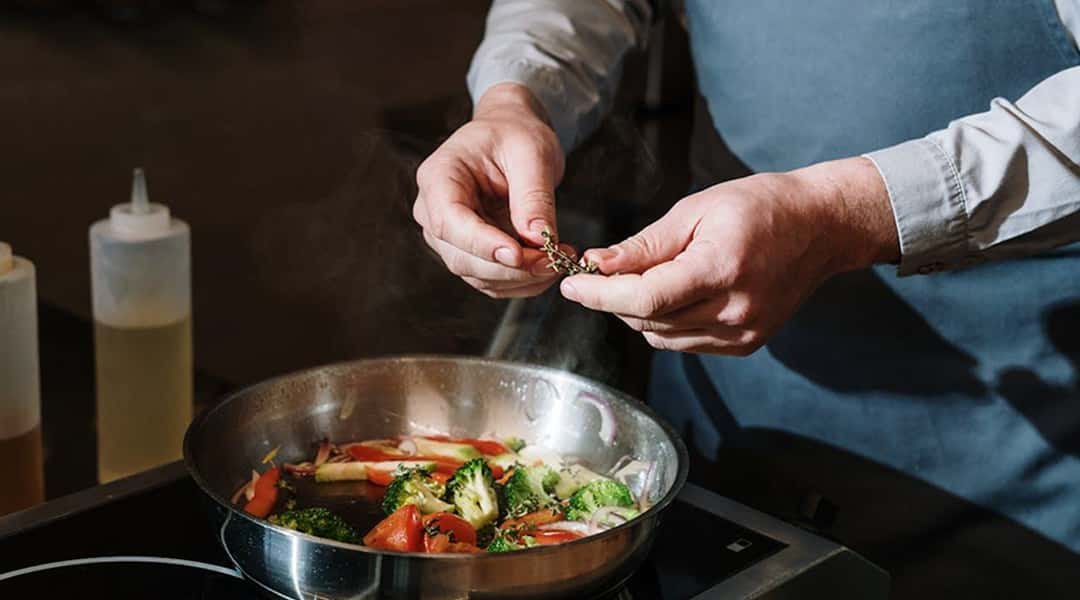Sleep – According to Ayurveda – The Pillar of Health
Sleep – According to Ayurveda – The Pillar of Health

Sleep according to Ayurveda is considered one of life’s three essential pillars, alongside diet and balanced living. This ancient wisdom underscores the essential role sleep plays in maintaining physical health, mental clarity, and emotional stability. In this blog, we explore the Ayurvedic perspective on the importance of sleep, the effects of sleep imbalances, and how to cultivate healthy sleep habits—all tailored to the European lifestyle.
The Significance of Sleep in Ayurveda
Ayurveda views sleep as the essential force that rejuvenates the body, calms the mind, and harmonizes emotions. Adequate sleep strengthens immunity, supports digestion, and helps maintain hormonal balance. Insufficient or excessive sleep can disrupt this equilibrium, leading to physical and mental imbalances. For example, studies have shown that chronic sleep deprivation can increase cortisol levels, exacerbating stress and impairing immune function. On the other hand, oversleeping has been linked to metabolic issues, such as weight gain and fatigue, making it crucial to maintain balance.
Sleep is integral to functions such as:
• Cellular Repair: Facilitating tissue rejuvenation and healing.
• Mental Clarity: Reducing stress and enhancing focus.
• Emotional Stability: Balancing emotions and reducing irritability.
• Digestive Health: Supporting metabolic processes and detoxification.
The Effects of Sleep Imbalances
Ayurveda emphasizes the importance of maintaining balanced sleep. Both insufficient and excessive sleep can have profound effects on health:
When Sleep is Insufficient
• Persistent fatigue and low energy levels.
• Weak immunity, increasing susceptibility to infections.
• Digestive disturbances such as bloating or constipation.
• Accelerated aging, including wrinkles and reduced vitality.
When Sleep is Excessive
• Lethargy and lack of motivation.
• Weight gain due to a sluggish metabolism.
• Mental fog and diminished concentration.
• Risk of Kapha imbalances, causing depression and a sense of heaviness.
Why Sleep Patterns Vary Among Individuals
According to Ayurveda, individual sleep patterns vary due to unique body types (Prakriti) and imbalances (Vikriti):
• Vata Dominance: Associated with light, interrupted sleep, often linked to anxiety or overactive thoughts.
• Pitta Dominance: Disturbed sleep with vivid dreams or early morning awakenings, typically stemming from intense or high-pressure lifestyles.
• Kapha Dominance: Deep, prolonged sleep with difficulty waking, often tied to lethargy and slower metabolic activity.
Diseases Linked to Sleep Disorders
Chronic sleep disturbances can lead to or exacerbate certain health conditions:
Insufficient Sleep:
• Insomnia, anxiety, and chronic stress.
• Hypertension and cardiovascular problems.
• Neurological disorders such as migraines.
Excessive Sleep:
• Depression and other mental health challenges.
• Metabolic disorders, including hypothyroidism.
• Chronic fatigue syndrome and associated issues.
Recognizing Symptoms of Sleep Disorders
It’s essential to identify sleep disorders early to prevent long-term health issues. Common symptoms include:
• Difficulty falling or staying asleep.
• Persistent tiredness despite adequate sleep.
• Daytime drowsiness and inability to focus.
• Snoring, choking, or breathing interruptions during sleep (indicative of sleep apnea).
• Emotional instability, such as mood swings or irritability.
Ayurvedic Lifestyle Practices for Healthy Sleep
Incorporating Ayurvedic principles into daily life can help restore balance and promote restful sleep:
Daily Routine (Dinacharya):
• Maintain a consistent sleep schedule.
• Create a calming bedtime ritual:
o Perform a warm oil massage (Abhyanga) with soothing oils like Brahmi or Ashwagandha.
o Drink a cup of warm milk infused with nutmeg or turmeric. For those who are lactose intolerant, opt for warm almond or oat milk with the same additions.
o Practice mindfulness or meditation to quiet the mind.
Dietary Tips:
• Avoid caffeine and heavy meals after sunset.
• Favour grounding foods like sweet potatoes, oats, and almonds to calm Vata and Pitta doshas.
• Use sleep-enhancing herbs such as saffron or fennel in your meals.
Herbs for Better Sleep:
• Ashwagandha: Reduces stress and supports deep sleep.
• Brahmi: Calms the mind and alleviates anxiety.
• Jatamansi: A natural sedative for managing sleep disorders.
Yoga and Pranayama:
• Gentle yoga poses such as Child’s Pose, Corpse Pose, and Legs-Up-The-Wall can promote relaxation.
• Breathing techniques like Nadi Shodhana (alternate nostril breathing) soothe the nervous system.
When to Seek Professional Help
While lifestyle adjustments can resolve most sleep issues, some symptoms warrant professional attention. Consult an Ayurvedic doctor if you experience:
• Persistent insomnia lasting over a month.
• Loud snoring, choking, or interrupted breathing during sleep.
• Daytime fatigue that affects daily life.
• Severe mood swings, anxiety, or depression linked to sleep deprivation.
Make sleep a priority—your body, mind, and spirit will thank you for it!
In Ayurveda, sleep is more than rest—it’s a cornerstone of health. By understanding your unique doshic constitution and adopting holistic practices, you can restore harmony to your sleep cycle. For persistent or severe issues, seeking Ayurvedic guidance can uncover root causes and offer tailored solutions.
We believe in collaborative relationship-based care where our Ayurvedic Doctors, Ayurvedic Practitioner, Ayurvedic Supplement Brands, Ayurvedic Nutritionists & Chefs, Yoga, and Meditation Trainers are in sync. Contact the team who passionately works together to hold your hand in this healing journey.




